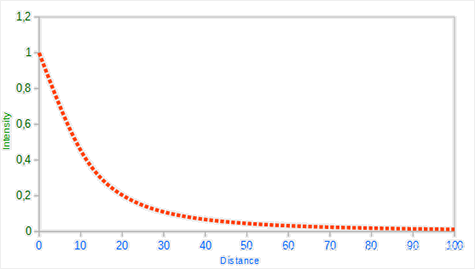前言
在上一次介绍光照时曾大概介绍了三种光照
图片选自LearnOpenGL
平行光
最简单来说,平行光可以理解为太阳光,光有固定的颜色和统一的方向,且衰减值可以忽略,即光照强度和距离没有关系。如图:

代码表示
#version 330 core
out vec4 FragColor;
struct Material {
sampler2D diffuse;
sampler2D specular;
float shininess;
};
struct Light {
//vec3 position;
vec3 direction;
vec3 ambient;
vec3 diffuse;
vec3 specular;
};
in vec3 FragPos;
in vec3 Normal;
in vec2 TexCoords;
uniform vec3 viewPos;
uniform Material material;
uniform Light light;
void main()
{
// ambient
vec3 ambient = light.ambient * texture(material.diffuse, TexCoords).rgb;
// diffuse
vec3 norm = normalize(Normal);
// vec3 lightDir = normalize(light.position - FragPos);
vec3 lightDir = normalize(-light.direction);
float diff = max(dot(norm, lightDir), 0.0);
vec3 diffuse = light.diffuse * diff * texture(material.diffuse, TexCoords).rgb;
// specular
vec3 viewDir = normalize(viewPos - FragPos);
vec3 reflectDir = reflect(-lightDir, norm);
float spec = pow(max(dot(viewDir, reflectDir), 0.0), material.shininess);
vec3 specular = light.specular * spec * texture(material.specular, TexCoords).rgb;
vec3 result = ambient + diffuse + specular;
FragColor = vec4(result, 1.0);
}
点光
点光源可以简单理解为点灯,光由一点发出,并且随着距离越来越远,光照强度也越来越弱

衰减
随着光线传播距离的增长逐渐削减光的强度通常叫做衰减。线性衰减实现容易,但是效果不真实,现实中的衰减效果如图,并非呈现线性衰减:

下面这个公式根据片段距光源的距离计算了衰减值,之后我们会将它乘以光的强度向量:

在这里d代表了片段距光源的距离。接下来为了计算衰减值,我们定义3个(可配置的)项:常数项Kc、一次项Kl和二次项Kq。
- 常数项通常保持为1.0,它的主要作用是保证分母永远不会比1小,否则的话在某些距离上它反而会增加强度,这肯定不是我们想要的效果。
- 一次项会与距离值相乘,以线性的方式减少强度。
- 二次项会与距离的平方相乘,让光源以二次递减的方式减少强度。二次项在距离比较小的时候影响会比一次项小很多,但当距离值比较大的时候它就会比一次项更大了。
代码实现
#version 330 core
out vec4 FragColor;
struct Material {
sampler2D diffuse;
sampler2D specular;
float shininess;
};
struct Light {
vec3 position;
vec3 ambient;
vec3 diffuse;
vec3 specular;
float constant;
float linear;
float quadratic;
};
in vec3 FragPos;
in vec3 Normal;
in vec2 TexCoords;
uniform vec3 viewPos;
uniform Material material;
uniform Light light;
void main()
{
// ambient
vec3 ambient = light.ambient * texture(material.diffuse, TexCoords).rgb;
// diffuse
vec3 norm = normalize(Normal);
vec3 lightDir = normalize(light.position - FragPos);
float diff = max(dot(norm, lightDir), 0.0);
vec3 diffuse = light.diffuse * diff * texture(material.diffuse, TexCoords).rgb;
// specular
vec3 viewDir = normalize(viewPos - FragPos);
vec3 reflectDir = reflect(-lightDir, norm);
float spec = pow(max(dot(viewDir, reflectDir), 0.0), material.shininess);
vec3 specular = light.specular * spec * texture(material.specular, TexCoords).rgb;
// attenuation
float distance = length(light.position - FragPos);
float attenuation = 1.0 / (light.constant + light.linear * distance + light.quadratic * (distance * distance));
ambient *= attenuation;
diffuse *= attenuation;
specular *= attenuation;
vec3 result = ambient + diffuse + specular;
FragColor = vec4(result, 1.0);
}
聚光
聚光可以理解为手电筒,光源形状呈圆形,并向四周有衰减

- LightDir:从片段指向光源的向量。
- SpotDir:聚光所指向的方向。
- Phiϕ:指定了聚光半径的切光角。落在这个角度之外的物体都不会被这个聚光所照亮。
- Thetaθ:LightDir向量和SpotDir向量之间的夹角。在聚光内部的话θ值应该比ϕ值小。
实现代码
#version 330 core
out vec4 FragColor;
struct Material {
sampler2D diffuse;
sampler2D specular;
float shininess;
};
struct Light {
vec3 position;
vec3 direction;
float cutOff;
float outerCutOff;
vec3 ambient;
vec3 diffuse;
vec3 specular;
float constant;
float linear;
float quadratic;
};
in vec3 FragPos;
in vec3 Normal;
in vec2 TexCoords;
uniform vec3 viewPos;
uniform Material material;
uniform Light light;
void main()
{
vec3 lightDir = normalize(light.position - FragPos);
// check if lighting is inside the spotlight cone
float theta = dot(lightDir, normalize(-light.direction));
if(theta > light.cutOff) // remember that we're working with angles as cosines instead of degrees so a '>' is used.
{
// ambient
vec3 ambient = light.ambient * texture(material.diffuse, TexCoords).rgb;
// diffuse
vec3 norm = normalize(Normal);
float diff = max(dot(norm, lightDir), 0.0);
vec3 diffuse = light.diffuse * diff * texture(material.diffuse, TexCoords).rgb;
// specular
vec3 viewDir = normalize(viewPos - FragPos);
vec3 reflectDir = reflect(-lightDir, norm);
float spec = pow(max(dot(viewDir, reflectDir), 0.0), material.shininess);
vec3 specular = light.specular * spec * texture(material.specular, TexCoords).rgb;
// attenuation
float distance = length(light.position - FragPos);
float attenuation = 1.0 / (light.constant + light.linear * distance + light.quadratic * (distance * distance));
// ambient *= attenuation; // remove attenuation from ambient, as otherwise at large distances the light would be darker inside than outside the spotlight due the ambient term in the else branche
diffuse *= attenuation;
specular *= attenuation;
vec3 result = ambient + diffuse + specular;
FragColor = vec4(result, 1.0);
}
else
{
// else, use ambient light so scene isn't completely dark outside the spotlight.
FragColor = vec4(light.ambient * texture(material.diffuse, TexCoords).rgb, 1.0);
}
}
带有渐变边缘
#version 330 core
out vec4 FragColor;
struct Material {
sampler2D diffuse;
sampler2D specular;
float shininess;
};
struct Light {
vec3 position;
vec3 direction;
float cutOff;
float outerCutOff;
vec3 ambient;
vec3 diffuse;
vec3 specular;
float constant;
float linear;
float quadratic;
};
in vec3 FragPos;
in vec3 Normal;
in vec2 TexCoords;
uniform vec3 viewPos;
uniform Material material;
uniform Light light;
void main()
{
// ambient
vec3 ambient = light.ambient * texture(material.diffuse, TexCoords).rgb;
// diffuse
vec3 norm = normalize(Normal);
vec3 lightDir = normalize(light.position - FragPos);
float diff = max(dot(norm, lightDir), 0.0);
vec3 diffuse = light.diffuse * diff * texture(material.diffuse, TexCoords).rgb;
// specular
vec3 viewDir = normalize(viewPos - FragPos);
vec3 reflectDir = reflect(-lightDir, norm);
float spec = pow(max(dot(viewDir, reflectDir), 0.0), material.shininess);
vec3 specular = light.specular * spec * texture(material.specular, TexCoords).rgb;
// spotlight (soft edges)
float theta = dot(lightDir, normalize(-light.direction));
float epsilon = (light.cutOff - light.outerCutOff);
float intensity = clamp((theta - light.outerCutOff) / epsilon, 0.0, 1.0);
diffuse *= intensity;
specular *= intensity;
// attenuation
float distance = length(light.position - FragPos);
float attenuation = 1.0 / (light.constant + light.linear * distance + light.quadratic * (distance * distance));
ambient *= attenuation;
diffuse *= attenuation;
specular *= attenuation;
vec3 result = ambient + diffuse + specular;
FragColor = vec4(result, 1.0);
}
